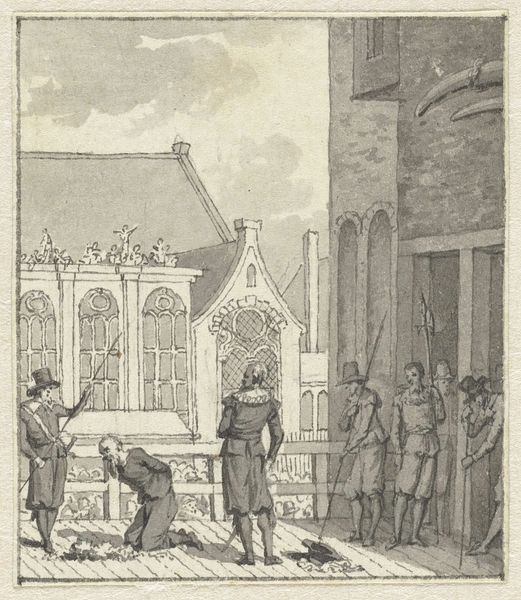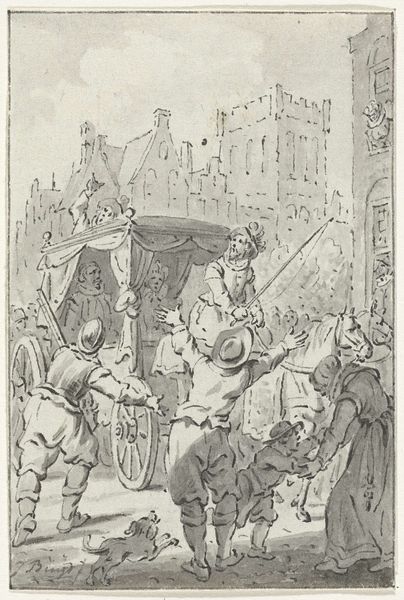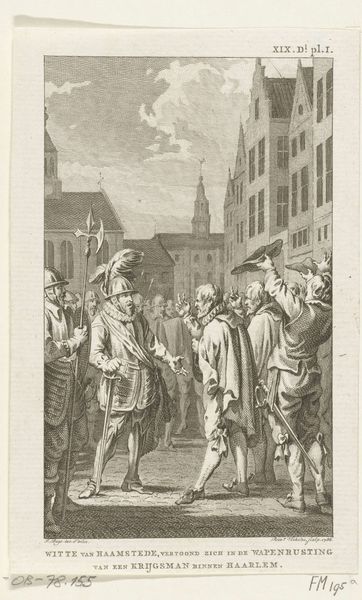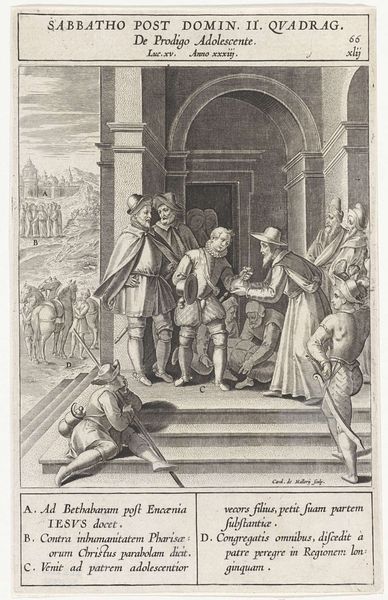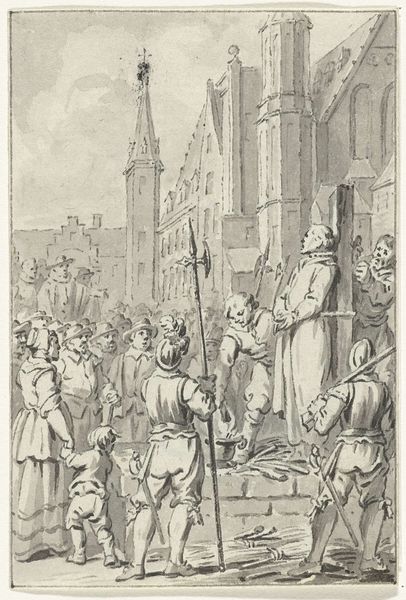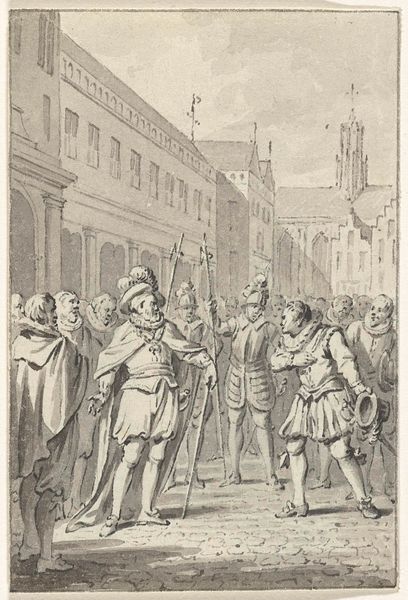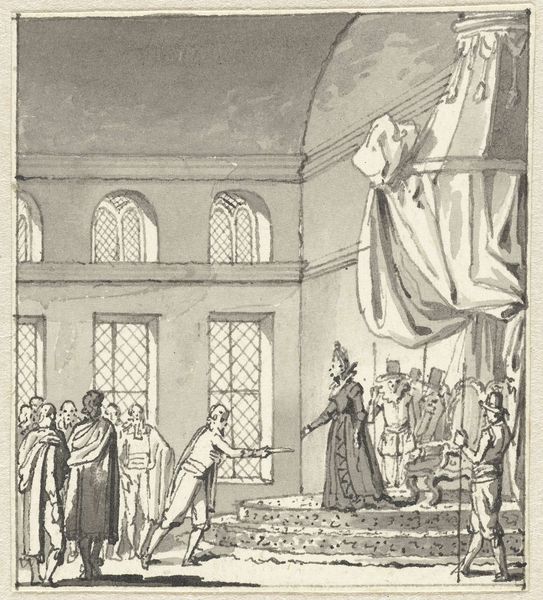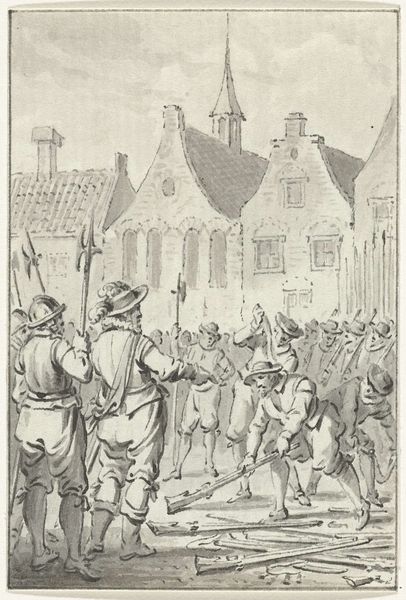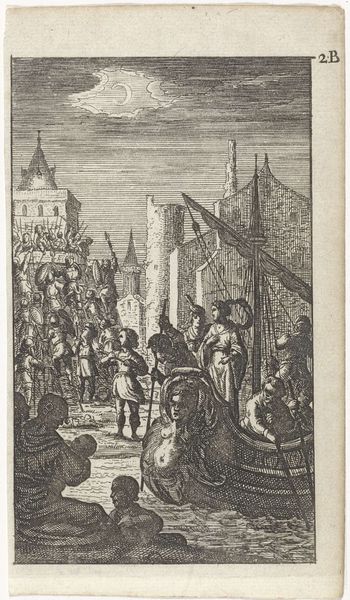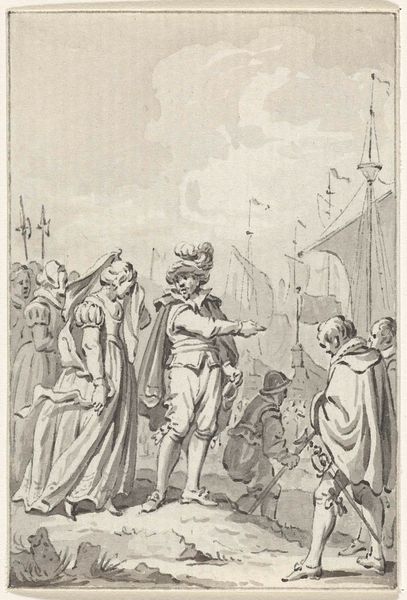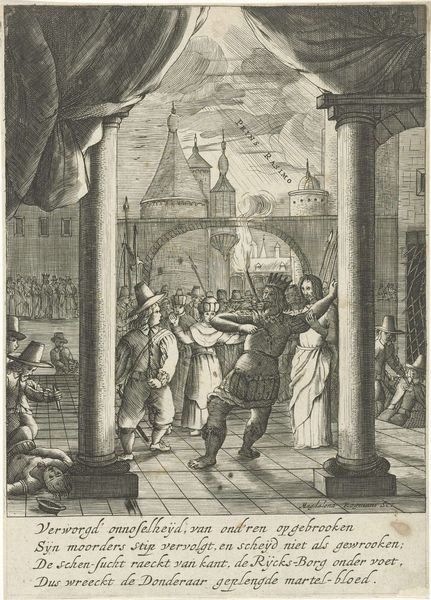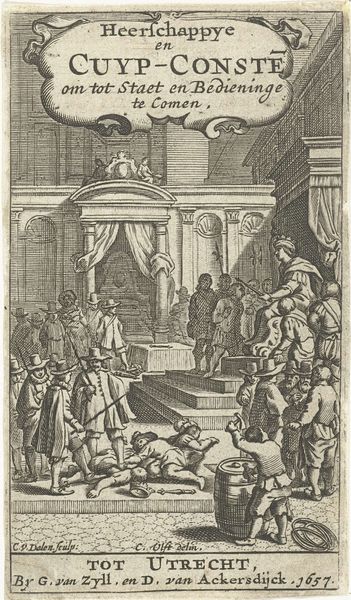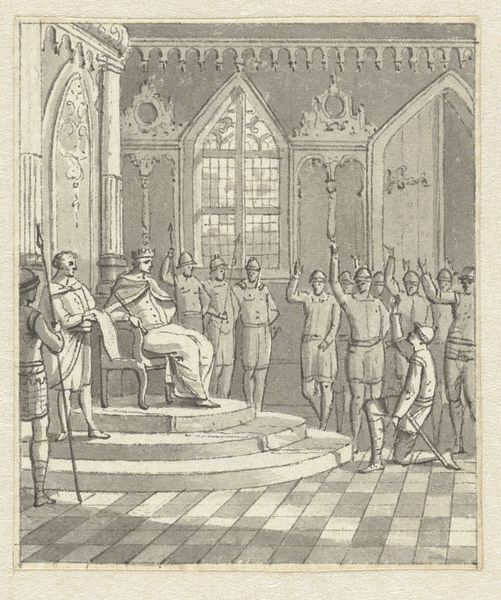
Dimensions: height 82 mm, width 56 mm
Copyright: Rijks Museum: Open Domain
Editor: Here we have Jacobus Buys’s drawing, "The Duke of Anjou Sworn in at Antwerp, 1582," created sometime between 1780 and 1795. It's rendered in pencil and ink, and it gives the impression of a grand civic moment. I am immediately drawn to how the artist balanced the architectural details of Antwerp with the dynamic figures in the foreground. What is your interpretation of this work? Curator: Focusing on the composition, note how Buys employed line and wash to delineate space and form. Observe the stark contrast of light and shadow, structuring the scene to emphasize the central figures of the Duke and the figure crowning him. What does this intentional arrangement tell us? Editor: Perhaps the intention is to convey authority and importance, using light to highlight their power? The trumpets also direct the eyes to the coronation at the top of the stairs, framing it from both sides. Curator: Precisely. Consider, too, the geometric precision with which the buildings and stairs are depicted, in contrast to the looser rendering of the figures. This tension between the formal and the informal creates a visual rhythm. Are we seeing the artist employ his formal methods to emphasize a dichotomy within the painting? Editor: It’s like a story is being told, not just about the Duke's inauguration but maybe something about the relationship between the place, the figures, and the historical weight of the event. So, is Buys maybe hinting at broader themes through the way he structures and presents the image? Curator: Precisely! The very restraint of the medium—pencil and ink—forces us to contemplate the essence of representation, doesn't it? Editor: I now appreciate the interplay between technique, composition and potential themes within the image, it really shows how much can be read even when looking only at the methods of production.
Comments
No comments
Be the first to comment and join the conversation on the ultimate creative platform.

